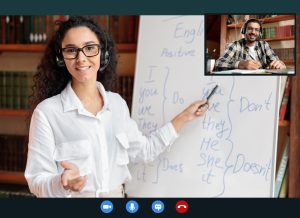2.4 Your Role as Professor
Learning Outcomes
Describe the role of the Professor
Your Role as a Professional Educator

Your faculty role includes maintaining currency in your subject or field and developing your abilities as a professional educator.
Faculty are considered “managers of the classroom” because they have a fiduciary responsibility to students. This responsibility includes creating meaningful learning opportunities and an environment that is conducive to learning and to safety. However, faculty are not managers of students, as students are not paid employees.
The Course Delivery Procedure is an official College procedure that explains key faculty expectations for preparing and delivering classes throughout the semester. It is available on the College’s policies and procedures page. These expectations include:
- Teach according to the mode of delivery assigned by the Chair (e.g., on-campus, hybrid).
- Use the official Course Outline to guide course delivery and to design the evaluation methods of student learning
- Use the official college LMS (eConestoga) for all course delivery
- Create and/or update a semester-specific Instructional Plan
- Prepare and/or update course materials and assessments, as appropriate
- Provide access to material beyond the week/time in which it is taught
- Ensure that all course materials and information remain on course shell following course end date
- Incorporate the principles of Universal Design for Learning (UDL) into course delivery and assessment design
- Determine approaches to attendance monitoring
- Reach out to at-risk students
Deliver Outcomes-Based Lessons and Assessments

As a professional educator in the college system, your role is to teach and assess students in each course according to the course learning outcomes so that, upon successful program completion, there is evidence that students have met the program learning outcomes. One course will not include all program learning outcomes, but the curriculum in courses within a program enables students to achieve the program learning outcomes.
Faculty teach and assess students so that students are aware of their progress towards achieving the learning outcomes of their course.
Faculty have a responsibility to provide activities and assessments that are directly aligned with course outcomes.Professional educators know that outcomes-based education starts with the end in mind. This means that analysis of outcomes and assessment is done prior to developing lessons. Because course outcomes are the first to be developed, lesson content should serve course outcomes before unit outcomes.
Faculty have a dual responsibility: evaluating learners’ progress to achieve course outcomes. However, they also support student learning by providing a safe classroom environment, appropriate scaffolding, practice opportunities, growth-oriented feedback, and encouragement.
Conestoga’s courses are created with industry standards in mind; however, as professional educators faculty are primarily responsible for course outcomes, not industry standards.
Create a Safe, Positive, and Inclusive Learning Environment
“For each class session, faculty will […] use techniques to create a positive and inclusive classroom environment” (Course Delivery Procedure, 4.c)Faculty are responsible for the safety and well-being of all learners as they deliver the course.
A safe learning environment is free of the threat of physical, psychological, or emotional harm and allows students to feel able to explore issues and express their ideas (Holley & Steiner, 2005).
Faculty create a safe and secure learning environment when they show care for their students. Faculty can create a psychologically safe learning environment by:
- Examining your own assumptions about their students
- Getting to know your students and helping students learn about one another
- Describing at the beginning of class when breaks will take place
- Using language that includes students
- Providing curriculum and examples that represent diverse backgrounds
- Modelling effective classroom participation
- Avoiding asking one individual to speak for a group
- Describing how you will support learners with disabilities, such as providing video captions and image alt texts
- Noting that you ask that all students contribute to participating in creating a classroom environment that is free from harassment and discrimination
- Encouraging students to contact you if there is a way you can make the class more accessible to them
When you emphasize to all students that students’ well-being matters to you, it will make students feel more welcome in your class and ready to seek support.
Maintain Confidentiality and Safety

Here are some ways to maintain the confidentiality and safety of all enrolled students in your course.
- Take attendance in every class, noting any person who is not enrolled.
- Remind students of required safety regulations, emergency procedures, and Personal Protective Equipment (PPE), as appropriate.
- Remind students not to share highly personal and private information.
- Establish guidelines for classroom behaviour, and correct unsafe behaviours
- Maintain the security of the in-person/synchronous online classroom.
- Do not share or make available information about student accommodations, concerns, or grades.
- Address any safety or security incidents in the classroom promptly.
- Report injuries, incidents, or hazards (see 3.6 Faculty Supports and Services).
5-Minute Web Search
Do a web search now! Learn about
- supports for faculty by Accessible Learning
- tips about Security for Zoom Meetings
Deliver Lessons in Your Course
“For each class session, faculty will […] devise a lesson plan” (Course Delivery Procedure, 4.b)
For each class lesson, faculty upload class material on eConestoga in advance and let students know what will happen during class.
You may receive materials and resources to teach your course. These materials are provided to support the unit and/or learning outcomes. Please check with your Program Coordinator or the faculty who provides curriculum guidance for your course before removing or changing material.
College technology provides faculty and students with course delivery options and digital resources to support flexible learning. Incorporating emerging technology into practice supports learning. Faculty can access support from IT Services and Teaching and Learning for learning about technology for teaching.

Faculty who teach in-person and synchronous online classes teach during a specific time of the week and location. The schedule cannot be changed without prior approval from their Chair/Chair Designate.
This includes preparing for:
- Starting and ending class on time
- Teaching for the entire time period scheduled (excluding breaks).
- Choosing a method of attendance-taking
- Using appropriate technology in class
- Giving students opportunities for ungraded formative assessments of their learning in class, with graded evaluations only occasionally taking place in class.
- Taking regular breaks
- Ending class 10 minutes before the hour
When Faculty Cannot Deliver a Class
Faculty are expected to deliver and teach all of their scheduled classes. However, a rare scenario may arise in which you are unable to deliver your scheduled class in the course’s designated mode of delivery due to illness or other exceptional reasons (e.g., bereavement).
Absence reporting practices differ from School to School, but in general, here are some steps you should follow:
- Immediately inform your Chair/Chair Designate
- Communicate with your students
For part-time/partial load or sessional faculty, once a part-time contract has a start and end date, the system automatically enters time each week for the duration of the contract. Time off needs to be discussed with your Chair as soon as possible. Contact your Program Manager, Chair/Chair Designate, or HR Advisor.
Note: Faculty should still provide opportunities for students to access lesson materials and makeup assessments that would have been provided during class. You should not have anyone teach your class or schedule an additional “make-up class” with students outside of scheduled class time.
5-Minute Web Search Activity
Do a web search now!
Review the
- Course Delivery Procedure for your teaching before classes start, during the first week of classes, and during the semester.
Assess Learning
Faculty must evaluate student work fairly and consistently using written rubrics and/or marking schemes [that] use criteria aligned to the course learning outcomes and clearly specify the required standard for success. These are provided, with the assignment instructions, well in advance of the due date (Evaluation of Student Learning Policy, p.2)
In the college educator role, assessing student learning is as important as teaching.
The Evaluation Plan (if available) on a Course Outline describes which outcomes are assessed in each graded assignment, quiz, or exam. Every course should provide for graded assignments clear instructions and an associated rubric or marking scheme that aligns with the Course Outline.
A quality marking scheme, such as a rubric, must be shared with students before the assignment’s due date. This allows students to understand standards for the assessment of their learning.
Assessments – Summative and Formative

On all graded assessments, students should receive not only grades but also feedback. It is necessary to provide feedback to students in an ongoing and timely way throughout the semester and at the end of the semester so that students understand what they have learned.
Summative assessments provide evaluative feedback on learning. Formative Assessments provide developmental feedback for learning.
| Summative assessments | Formative assessments |
| Typically higher stakes, as they have a higher grade value and provide a module or course-end summation or evaluation of learning. | Typically lower stakes, as they provide a low or no grade value and provide progress information to students on how well they have learned so far. |
Provide Feedback and Grades
Formative Feedback
“For each class session, faculty will […] where appropriate, provide opportunities for formative feedback and coaching” (Course Delivery Procedure, 4.j)
Formative assessments allow faculty to monitor student progress and learning throughout the semester. Formative feedback allows students to adapt their learning and study strategies to improve their performance. Another benefit of formative assessments is that faculty can identify at-risk students and connect with them early to offer support.
Formative assessments are not used to penalize lack of effort or “send messages” that a student is not a good fit for a field or industry.
Grades
Conestoga provides a grades tool in eConestoga that students may access at any time. Students should have access to their updated grades. Do not share student grades with others.
Final Grades
Please review the Evaluation of Learning Procedure for Final Grades, and note the following from this document:
“Faculty will submit the final grade to the Employee Portal within 3 working days of the course end or final assessment.
a. Faculty will consult with Academic Manager prior to any delays.
b. Where an Incomplete (I) has been assigned, faculty will:
i. Inform the Academic manager.
ii. Submit the Incomplete Form to the Registrar’s office.
iii. Submit a mark Change Form, within the required time frame, as soon as the grade becomes available.”
Please note that both the Incomplete Form and the Grade Change Form are now available on Laserfiche.
“A student who is seeking a review of an academic decision is expected to discuss their concerns with the appropriate faculty member within five (5) working days of receipt of the grade or academic decision. […] The faculty member will respond in writing to the student within five (5) working days of receipt of the concern.” (Academic Dispute Resolution Procedure, p.3)
When a student is concerned about their grade, a timely response allows students to feel supported in their self-advocacy.
If a student raises a concern and is unsatisfied with the decision, the student has a right to appeal their course grade or any assignment with a value of 25% or greater. Students must follow the College’s Academic Dispute Resolution and Appeal Policy and Procedure.
The College due date for all final grade submissions is within 3 days of the end of the semester or after the final assignment is submitted.
Find out more about assessment of learning and grading, including academic dispute resolution, in the micro-credential course, Active Learning Leading to Assessment (EDEV0650).
5-Minute Web Search Activity
Do a web search now! Review these key policies and procedures for your teaching.
Address Academic Integrity and Misconduct
Academic integrity is about honesty, fairness, and respect for others while pursuing academic excellence. Academic integrity occurs when learners do their own work and provide proper credit when using other people’s ideas. Upholding academic integrity is everyone’s responsibility and ensures that the credentials earned while attending Conestoga are valued and respected.
When a possible Academic Integrity Violation (AIV) is identified
the following must occur:
“A member of the Academic Team notifies the student in writing within 3 business days of determining that an AIV has likely occurred.. […] The filing of all AIVs, other than those resulting in Discontinuance, will be completed within 14 business days of the original communication to the student.” (Academic Integrity Procedure, p.4)
Understanding what constitutes an academic offence will help you fairly investigate any suspected offence of which you become aware. College policies, such as the Academic Integrity Policy and Procedure, will guide you in investigating and documenting potential incidents involving academic integrity fairly and on time. According to the Academic Offenses Procedure, faculty are responsible for communicating expectations about appropriate academic behaviour in course materials regarding all group work, assessments, and citing and referencing.
5-Minute Web Search Activity
Do a web search now! Review these key policies and procedures for your teaching.
- Academic Integrity Policy (PDF file)
- Academic Integrity Procedure (PDF file)
- Academic Integrity (Faculty Support) website through Library Services
References
Holley, L. C. & Steiner, S. (2005). Safe space: Student perspectives on classroom environment. Journal of Social Work Education, 41(1), 49 -64.
 Section 2.4 Review
Section 2.4 Review
Please pause and answer these 11 practice questions to review and check your learning!
